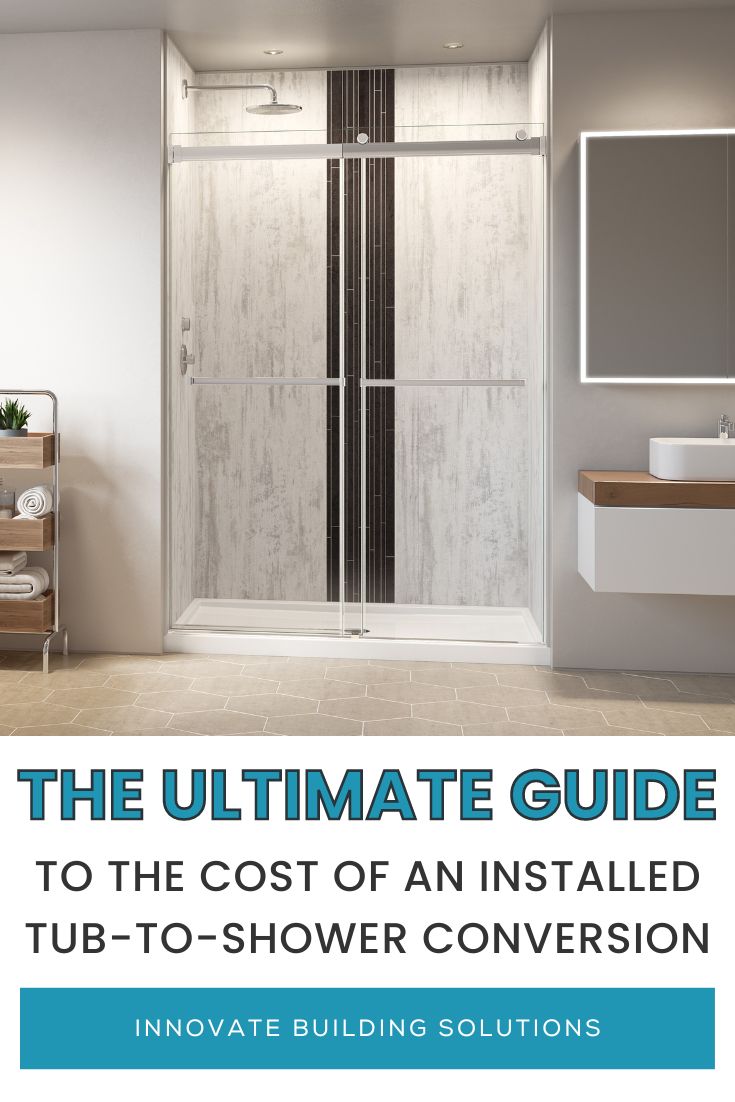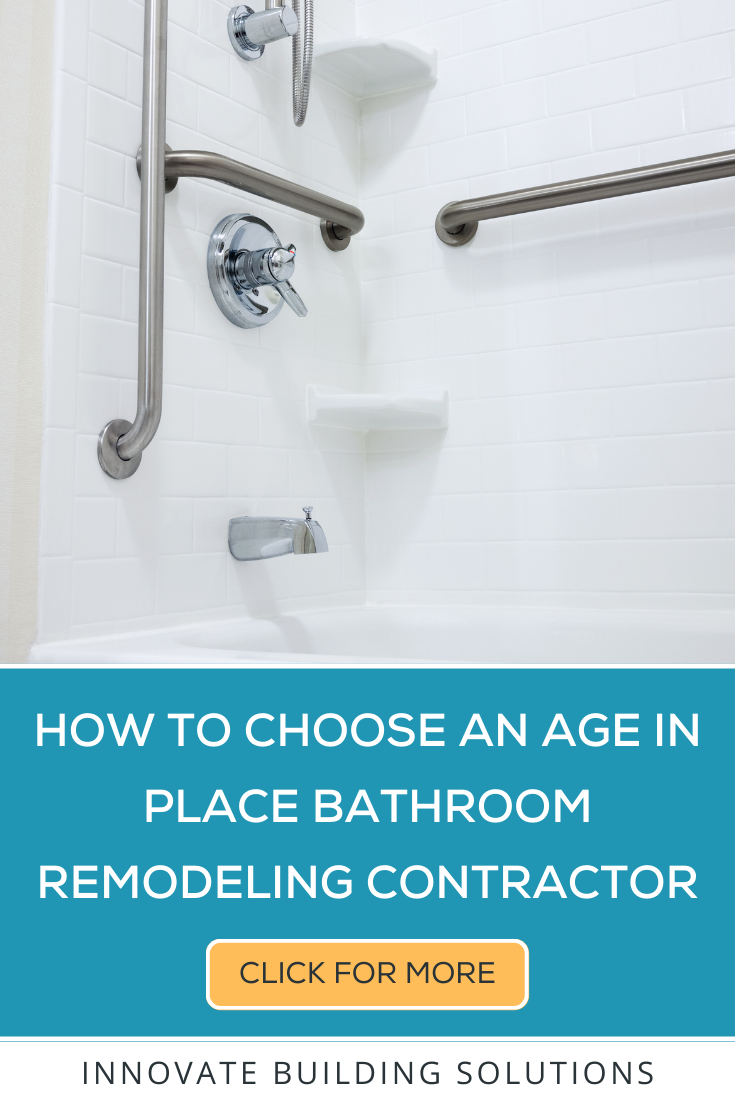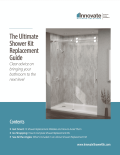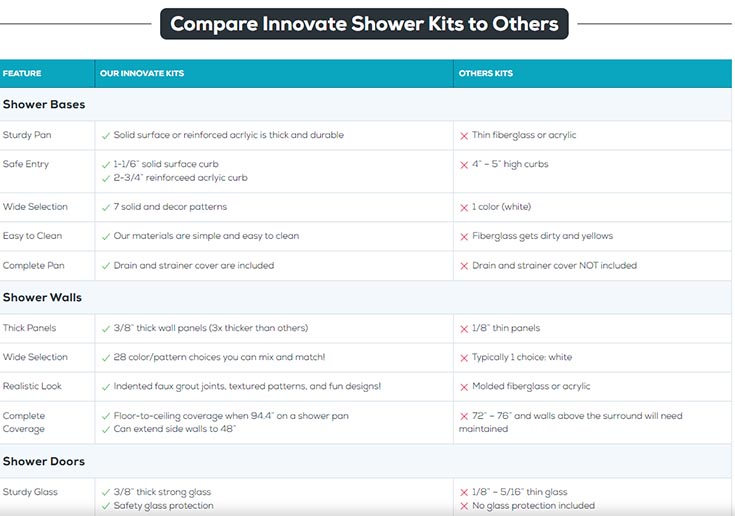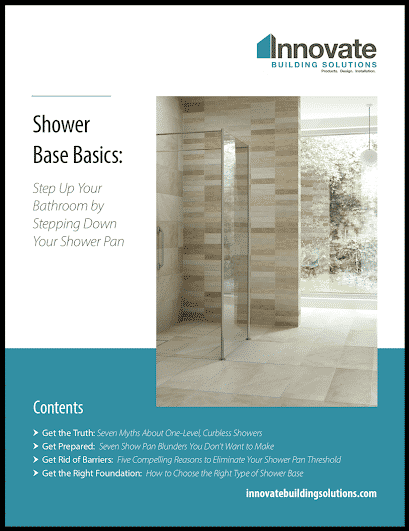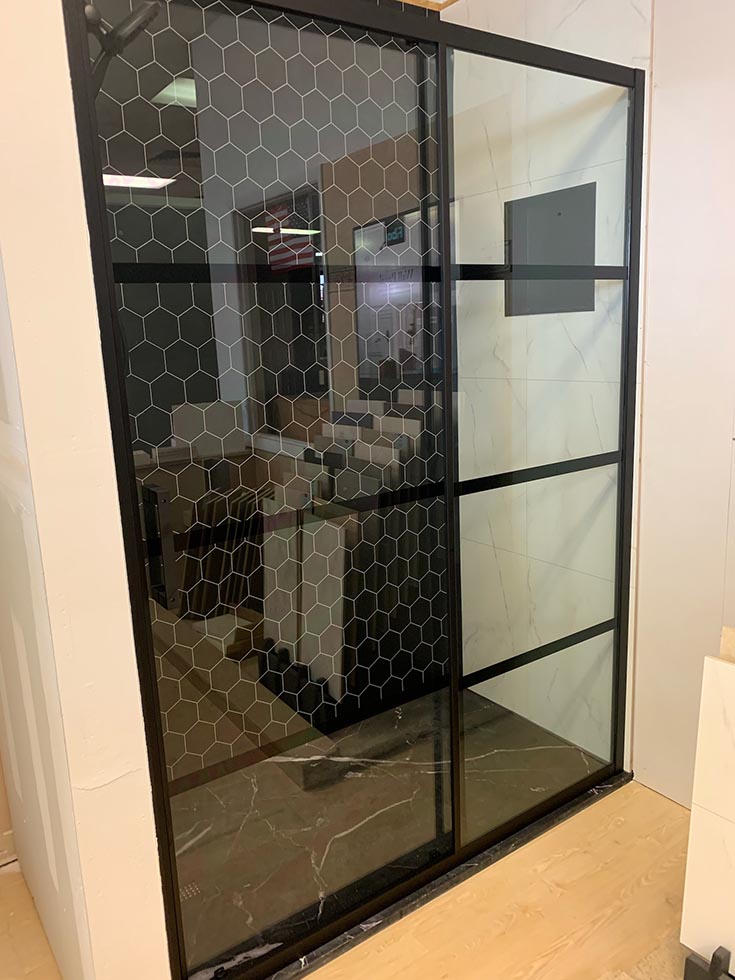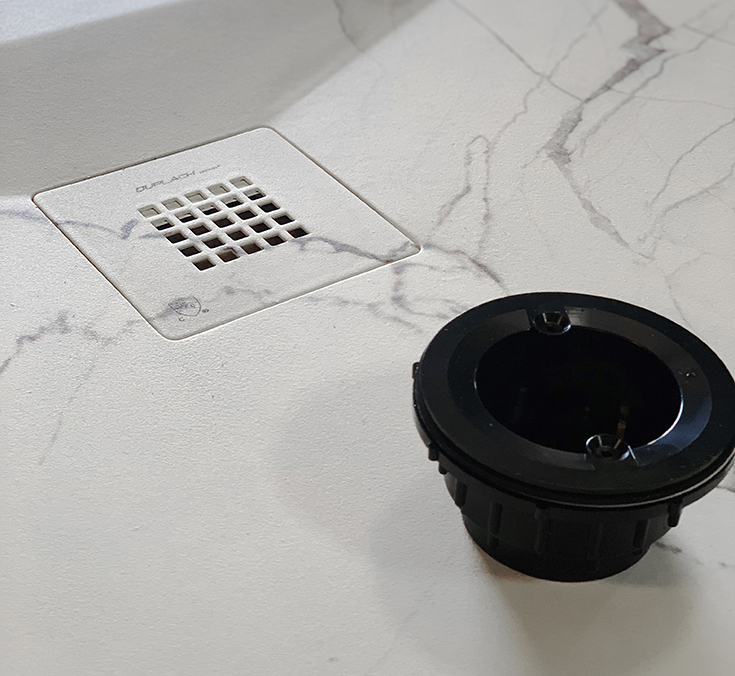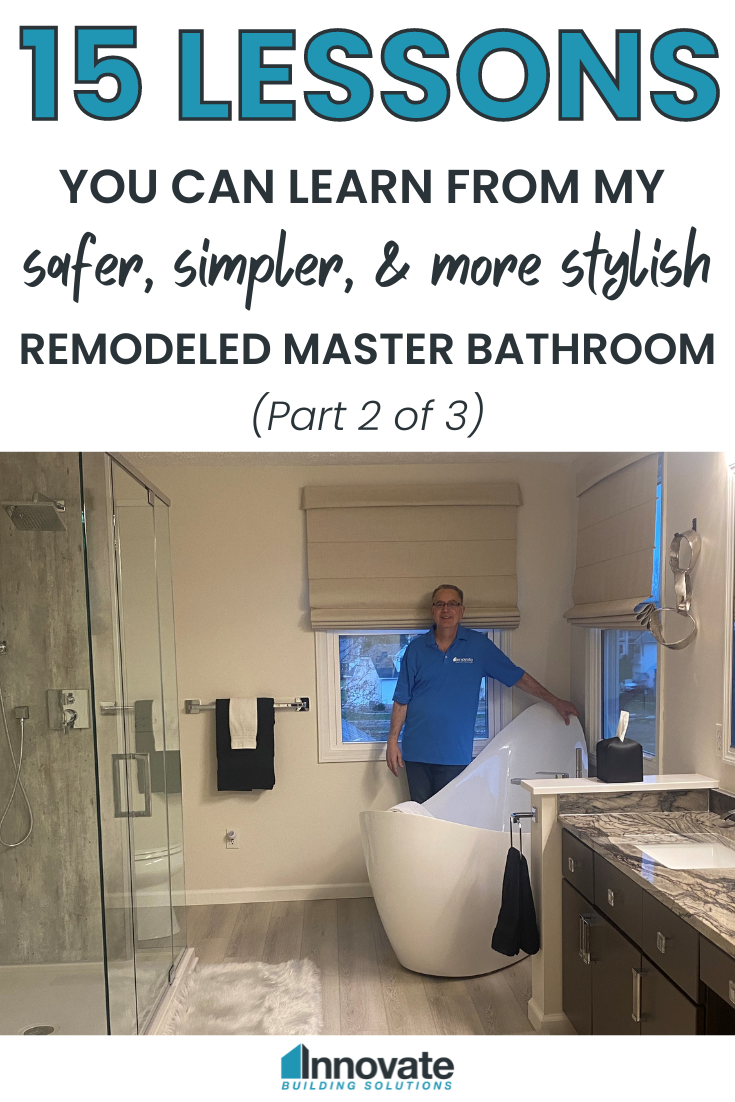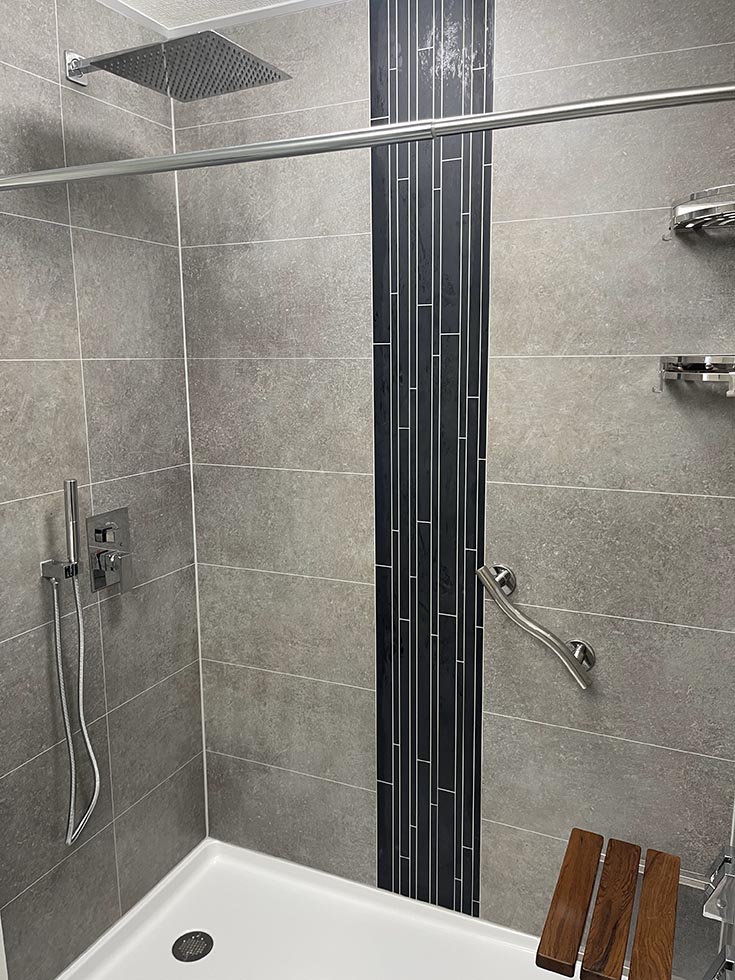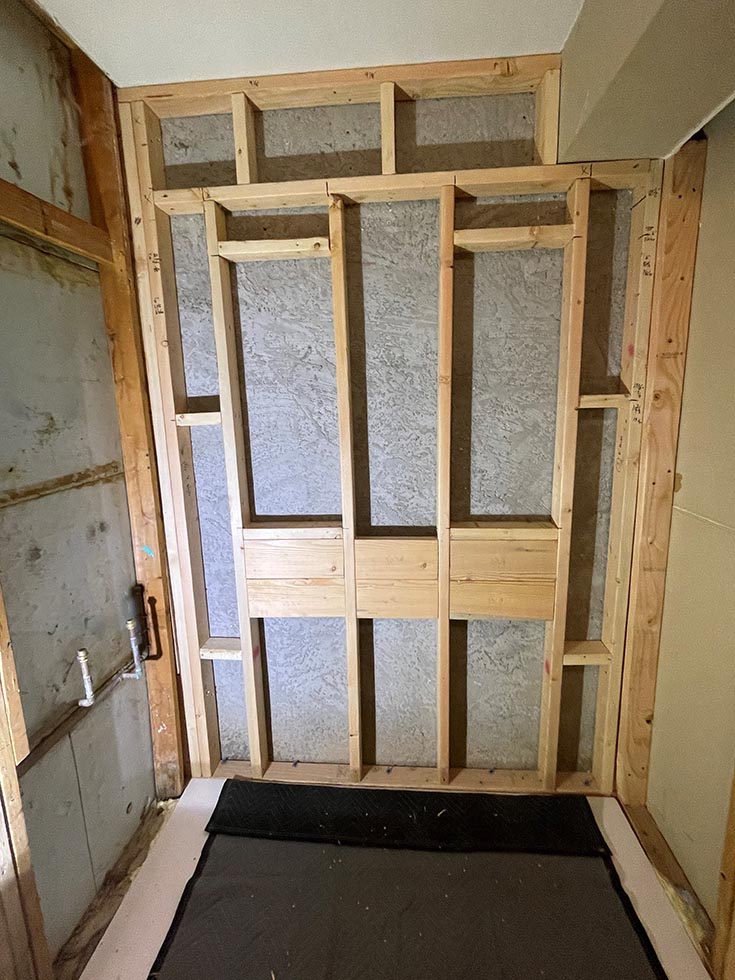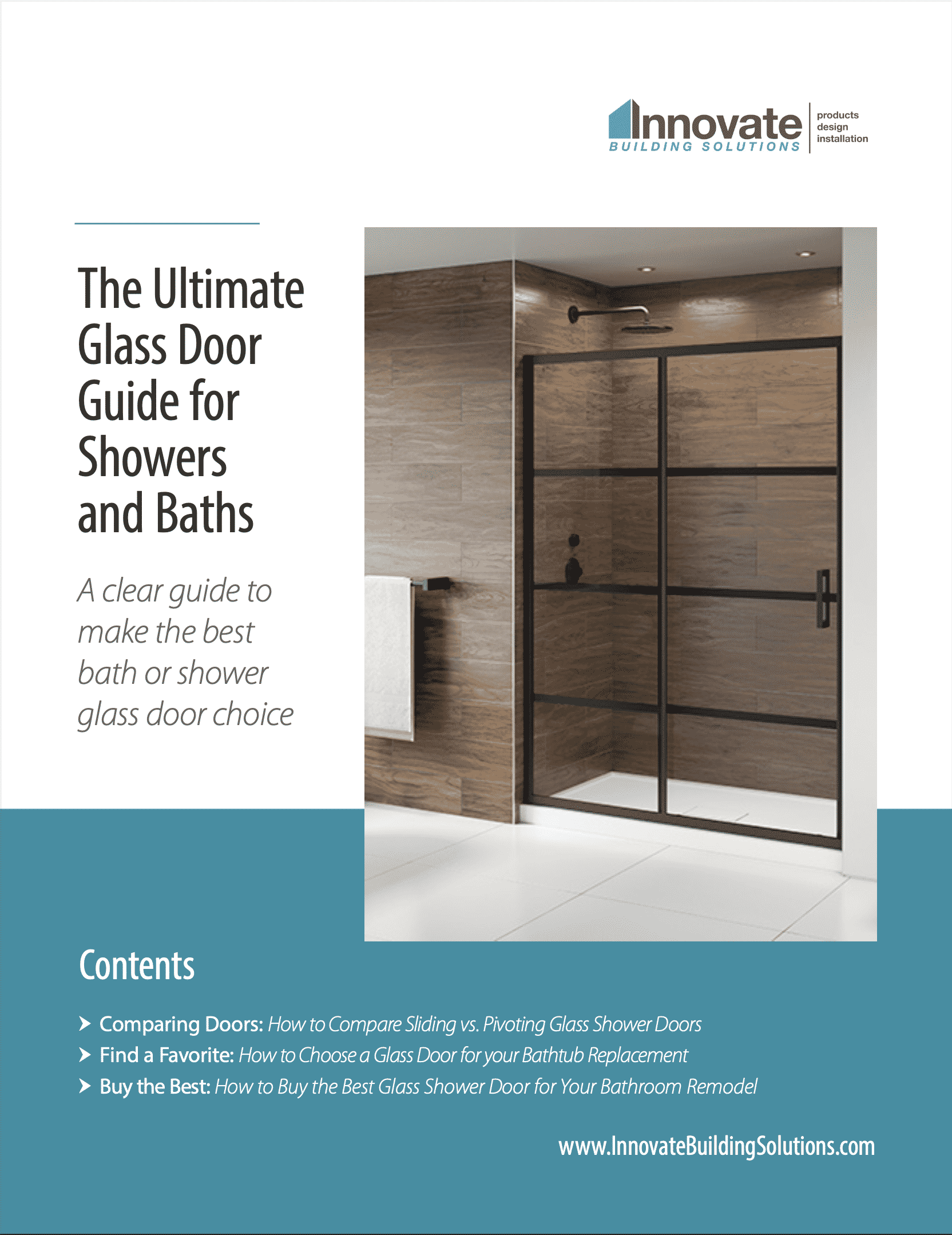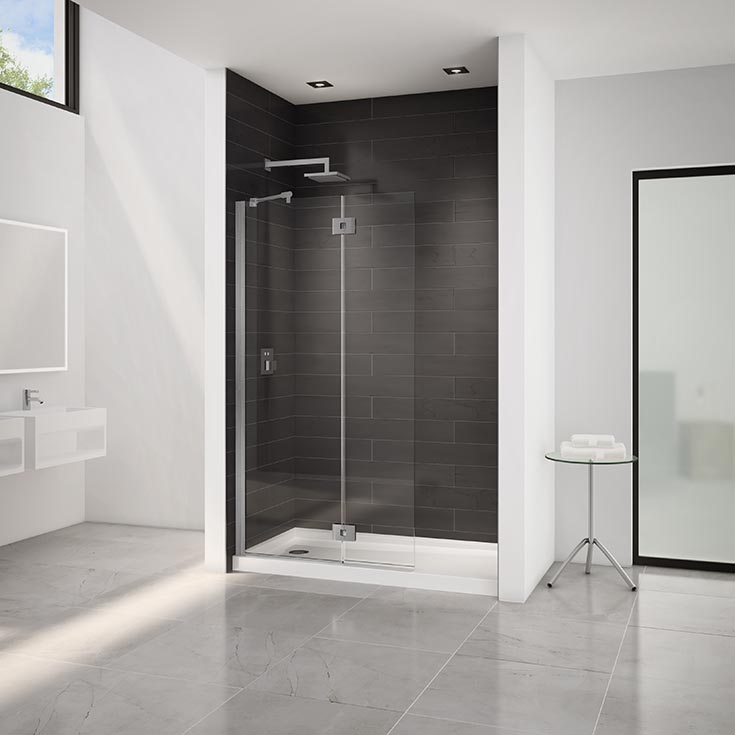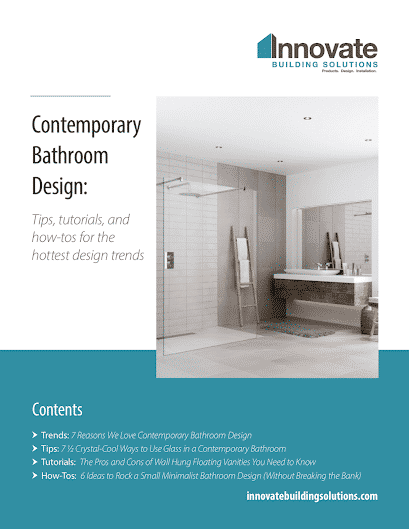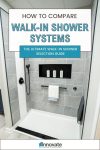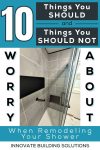21 Sure-Fire Ideas to Save on an Installed Tub to Shower Conversion.

You know the time is NOW to convert your tub into a shower. And here’s a few reasons why:
- Every time your spouse is ‘attempting’ to climb into the tub to shower you’re worried they’ll fall. And, as you know, hospital stays aren’t cheap, nor any place they want to be!
- You haven’t taken a tub in years.
- If you looked in the ‘dictionary’ (if one even exists today) under ‘outdated bathtub/shower’ you swear you’d see a picture of your bathroom!
And even though you know you need to convert your bathtub to a shower, you’re worried.
You’re worried about getting ripped off (after all the home improvement industry doesn’t have the best reputation).
You’re worried about being ‘oversold’ on features you don’t need.
You’re worried you’ll buy a system which won’t function at a high level (and look stylish) as you’re aging in place in your home.
So, what can you do to ensure you make a smart choice for your tub to shower conversion AND save money? Well, a way to start is by reading the 21 ideas below. And to make this article easier to follow it’s split into 3 parts.
- Part 1 – How to research a tub to shower conversion and make sure you don’t feel pressured into making a rash decision.
- Part 2 – How to save money even if you’re not DIYing the job yourself.
- Part 3 – Learn about the products used in a bathtub to shower conversion to get the most from your budget.
Part 1 – How to research a tub to shower conversion and not feel pressured into making a rash purchase decision.
Knowledge is power. And research gives you power. And the more you know BEFORE you invite any sales representatives into your home to quote a tub to shower conversion, the better you’ll do getting the most for your money. So, let’s start with cost-saving tub to shower idea #1 which will show you how research can help you make a sound (not rushed) decision.
Cost saving tub to shower conversion idea #1 – Know the market price of a professionally installed tub to shower conversion.
I’m here to tell you some articles on the Internet about the cost of installed tub to shower conversions are complete garbage. They’ll provide unrealistic prices (and this even includes an article in the esteemed publication – Architectural Digest – which says tub to shower conversions cost from $1,200 to $8,000. This is nonsense.
And you may ask, “Mike – why are you so sure you know what these projects really cost?”
Well – it’s because my company not only installs bath to shower conversions in Cleveland Ohio, but we wholesale alcove shower kits for these projects to contractors every single day and we know what they’re charging.
And if you’re wondering what the range of prices are read, A Comprehensive Guide to the Cost of an Installed Tub to Shower Conversion.
Another way to get an idea of costs is to check out the Remodeling Magazine Cost/Value Report for your area.
Cost saving tub to shower conversion idea #2 – Know what to look for in a contractor (and how to interview them).
OK – I’ll bet most of your aren’t professional contractors and DO NOT do carpentry, plumbing, flooring, and electrical work for a living. So, knowing what to ask a contractor to make sure you’re not only getting a fair value, but also that they know what they’re doing (especially if this shower needs to last and you want to age in place) can be difficult.
However, with this being said, here’s 2 articles to help you know the contractor has their act together AND that you’re asking the right questions to choose the best contractor.
Cost saving tub to shower conversion idea #3 – Don’t believe a good deal today won’t still be a good (or even better) deal tomorrow.
Have you ever heard the bathroom remodeling industry term called a ‘one call close?,’ If not, this is the practice to push you into buying TONIGHT. The way high-pressure salespeople (even those with fancy-schmancy presentations) do it is through ‘discounts’ which are ‘only available tonight.’
Well – I’m here to tell you this is a pre-planned sales process designed to get a deposit from you on the first appointment (and for those of you ladies out there who HATE sexist companies, this is why some of these companies will ask you to have your ‘husband’ at the sales call…. even if you don’t have a husband!).
And as I think about high-pressure sales environments, I remember my dad telling me when he took me to negotiate (and possibly buy) a car when I was little he said, “Michael, a good deal today will still be a good deal tomorrow. You must be ready to walk away.”
So – if you’re feeling pressured to ‘sign tonight’ for a once-in-a-lifetime opportunity to get this A-MAZ-ING deal, I’ll bet you’ll find the companies using these ‘one call close high pressure tactics’ generally ARE NOT the best price. In addition, I’ll bet they’ll still offer you this same deal a week or two later.
If you want to save money, DO NOT ALLOW A SALES REP TO PRESSURE YOU TO BUY TODAY!

So, now let’s move onto part 2.
Part 2 – How to save money even if you’re not DIYing the entire job yourself.
While you may be capable of doing some parts of the installation of the tub to shower conversion yourself, few people know all the facets of this project. In addition, few know the product choices to get the best value for their money. So, how can you save – even if you’re not going to do it all yourself? Here’s a few ideas:
Cost saving tub to shower conversion idea #4 – Do your own demo.
Even though removing old materials isn’t where the biggest portion of the cost is, it requires the least skill and can save you a few bucks (although there’s certainly not a lot of glory in the work – ha! ha!).
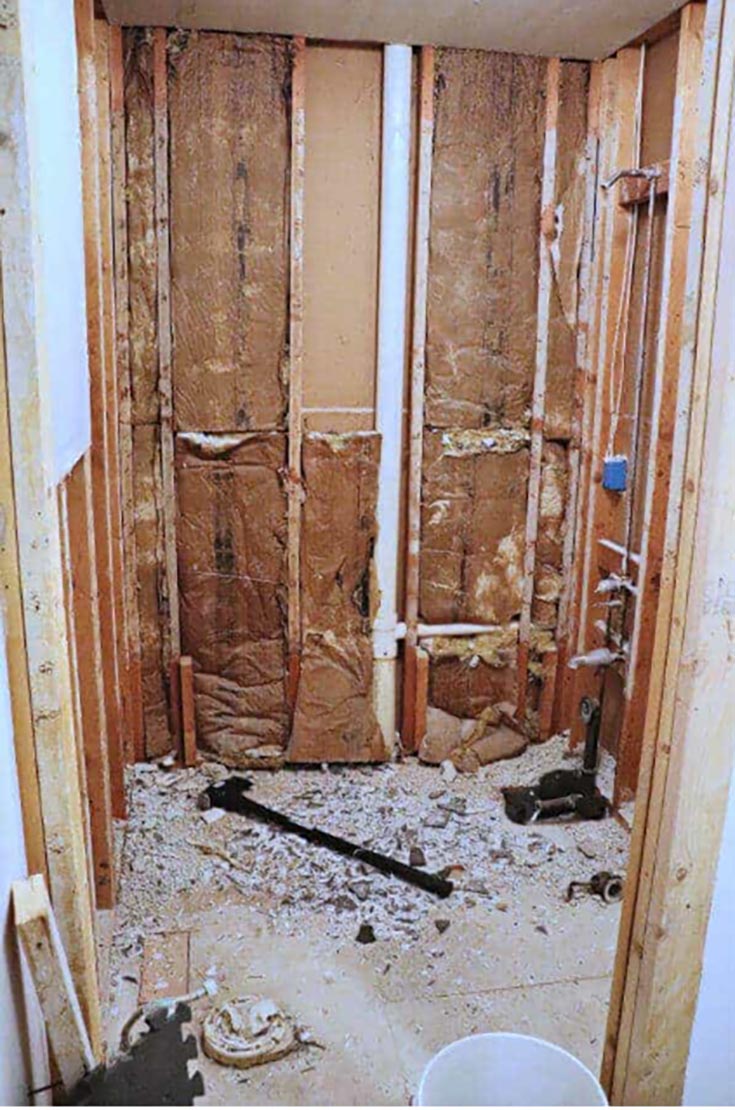
Cost saving tub to shower conversion idea #5 – If required, have your existing tub opening reframed to a standard size
While most bathtub to shower conversion spaces are 60” wide (this is the most common tub size), this isn’t true for all tubs (especially if you have a really old house).
So, what can you do if you have an odd-size which isn’t 60” wide? In these cases, have your contractor reframe the opening to a smaller size.
For example, for a 66” wide opening, reframe it to 60” and include a ledge in the last 6” for soap and shampoo.
Cost saving tub to shower conversion idea #6 – Ask about product packages or kits.
As you know when you go to fancy restaurants and buy a la carte, it gets expensive.
And the same practice holds true when buying tub to shower conversion systems. You’ll find many contractors have pre-packaged shower kits where they’re buying in bulk which saves you money. And if your contractor doesn’t have prepackaged kits, look for wholesalers with higher quality alcove shower kits to get a better value for your money.
Cost saving tub to shower conversion idea #7 – Look beyond initial purchase prices. Make sure you’re getting value.
In part 3 below, we’re going to take a ‘deep dive’ (this is a corporate term I hate – but thought it’d be fun to use it here) and investigate the products used in a tub to shower conversions.
However, before we do this I want to stress the need to keep your eye on the full ‘value’ of the products you use. And by value I mean, don’t overlook product warranties, material quality, thickness, safety, style, and product longevity.
While a project can be ‘cheap today,’ if you need to replace it tomorrow, that’s NOT a good thing (or a good buy)!
So, now let’s examine the products used to get the biggest bang for your bucks. I’ll start with cost saving ideas for the shower pan, then move up to the shower walls, then look at systems to keep the water in (curtains or glass doors), and lastly at accessories.
Part 3 – Learn about the products used in a bathtub to shower conversion to get the most for your budget.
Long after your contractor has finished, how your shower lives (and looks) will be a function of the quality, safety, simplicity, and style of the product selections. In this section, I’ll give you cost-saving insights on these selections. We’ll start with shower pans.
Shower Pan Details
Cost saving tub to shower conversion idea #8 – Don’t buy a tile shower pan.
I know many of you think you want a tile shower pan. And I’ll admit there are incredibly creative things you can do with tile. However, if you’re looking to save money (and stop being forced down on your hands and knees cleaning tile grout joints), use a grout free shower pan vs. a tile base.
Cost saving tub to shower conversion idea #9 – Don’t buy a shower pan which’ll crack or yellow.
As you can imagine, shower pans are not all created equal. And if you have a yellowed and/or cracking tub/shower unit today you know EXACTLY what I’m talking about.
So, when selecting a shower pan remember – even though it’s not the sexiest part of the shower – if it cracks, Houston (or whatever your name is), you’ll have a problem!
Make sure you know the pan is guaranteed not to yellow or crack. This means you should be cautious or stay away from buying a fiberglass system (which are notorious for turning yellow and cracking).
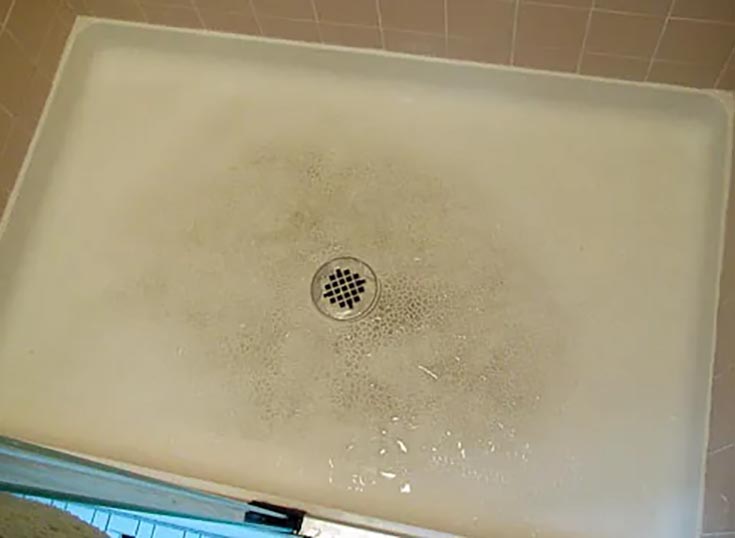
Cost saving tub to shower conversion idea #10 – Make sure your pan can hold up to the weight and won’t be dangerous to step into.
Have you ever stepped into a shower pan which squeaked and you thought would crack at any moment? Or have you tripped while stepping over a high shower curb?
It’s for this reason you need to make sure you’ve got a sturdy and safe shower pan. I like this solid surface low profile shower pan. It has a 1 1/6” high curb, a textured surface, and 2 tons (‘er 4,000 lbs.) of weight capacity.
Cost saving tub to shower conversion idea #11 – Don’t get carried away with fancy drains.
If you never thought expensive shower drains could be ‘cool’ until you saw linear drain images on Pinterest, you may now be finding out you need to calm your ‘champagne tastes’ to match your ‘beer budget.’
And while I also HATE, HATE, HATE ugly round shower drains – I want you to know you can get a cool drain (and isn’t that what everyone dreams of?) without extra cost. I like the look of a ‘disappearing’ square shower drain like you’ll see below. They’re sleek and don’t drive up your bill like a fancy linear drain.
Shower Wall Details
Cost saving tub to shower conversion idea #12 – Don’t buy tile wall surrounds.
For those of you who’ve followed my blog, you know I’m not a fan of tile showers. And yes it’s also because the tile shower in my own home failed. And if you want to learn more about the materials I used to replace it read 15 Lessons You Can Learn from My Safer, Simpler, and More Stylish Master Bathroom.
So, why am I a fan of eliminating tile shower wall surrounds in your tub to shower conversion? Well, here’s 3 good reasons:
- Reason #1 – Tile shower surrounds are expensive.
- Reason #2 – Tile shower surrounds have grout which is a pain (or your pain) to keep clean.
- Reason #3 – Tile shower surrounds rarely have a long guarantee (or any guarantee at all). If they fail they’ll be YOUR problem, not your contractor’s problem, to fix.
Cost saving tub to shower conversion idea #13 – Make sure the wall panels you purchase aren’t thin or look cheap.
The reason many people still use tile is because the grout-free tile alternatives either look cheap, fake, or are wafer-thin.
And while this is true of many acrylic or fiberglass systems – there are better options. My favorite for thickness, realism, and a strong (lifetime) warranty are laminate wall panels. These panels are 3/8” thick, come in realistic stone, wood, and cement patterns and are 100% waterproof.
Cost saving tub to shower conversion idea #14 – Make sure there’s blocking behind the walls for future grab bars or seats.
If you’re looking to stay as far away from senior living facilities as you can, you need to be smart in the remodeling process. And one – very inexpensive – way to prepare for the future is adding wood blocking behind the wall panels so if you (or a loved one) needs grab bars or a fold down shower seat, it’ll be easy (and safe) to add at a later date.
How to keep the water inside the shower and NOT spend too much money. Choosing curtains or glass doors
If you’ve ever shopped for a glass shower door, you know, they’re not a cheap date. So, the question is, if you can’t afford to spend an arm and a leg on an expensive shower door – but do want to make sure water isn’t pooling on the bathroom floor and could then leak onto the floor below – how can you do it? Here’s some cost-saving ideas to guide your selections:
Cost saving tub to shower conversion idea #15 – If your budget is razor-thin right now, opt for shower curtains with a tension rod.
There’s no debating that shower curtains are the lowest cost way to keep water inside your shower (and not on the bathroom floor). And if your budget is ‘teeny-tiny’ (as Roseanne Rosannadana from Saturday Night Live might have said) then your best option – at least for now – can be shower curtains.
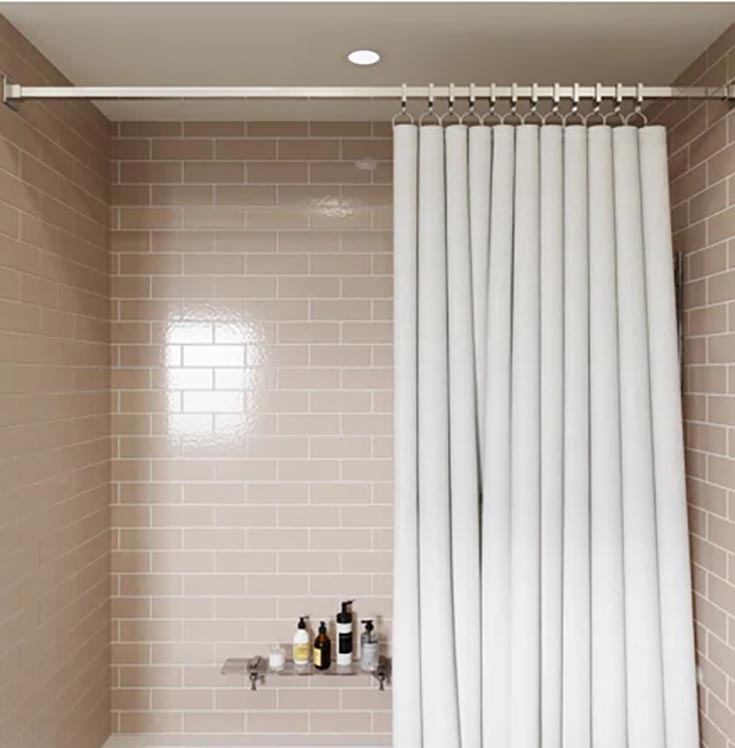
However, if you eventually want to remove the curtains with a sturdy glass shower door be thoughtful how you mount the curtains because if you put holes in the tiles or wall surrounds you can’t cover up later (when you do replace the curtains with a shower door) you’ll be sorry. It’s for this reason I’d use a tension rod, so they’ll be no holes to ‘attempt’ to cover over later.
Cost saving tub to shower conversion idea #16 – Use a walk in glass shower door vs. a bypass glass door.
The most popular door for a tub to shower conversion is a bypass door (where both doors slide) because it not only keeps all the water in, but it’ll keep you warm because it’s a full glass enclosure.
However, if you want a contemporary style – and need to keep costs down – another option is walk in shower glass. I like the walk in glass unit below because it combines fixed glass with a small pivoting door on the end. The pivoting door can be angled in to keep the water inside the shower. It allows you a 35” space to walk in. And it’s a big step up from curtains.
Cost saving tub to shower conversion idea #17 – Use less expensive hardware finishes for your door and/or shower fixtures.
While brushed nickel and matte black finishes are HOT, HOT, HOT in bathroom design today, if you need to save a few bucks and like a contemporary look, polished chrome is still in style (although I’ll warn you polished chrome shows more spotting than brushed and matte finishes).
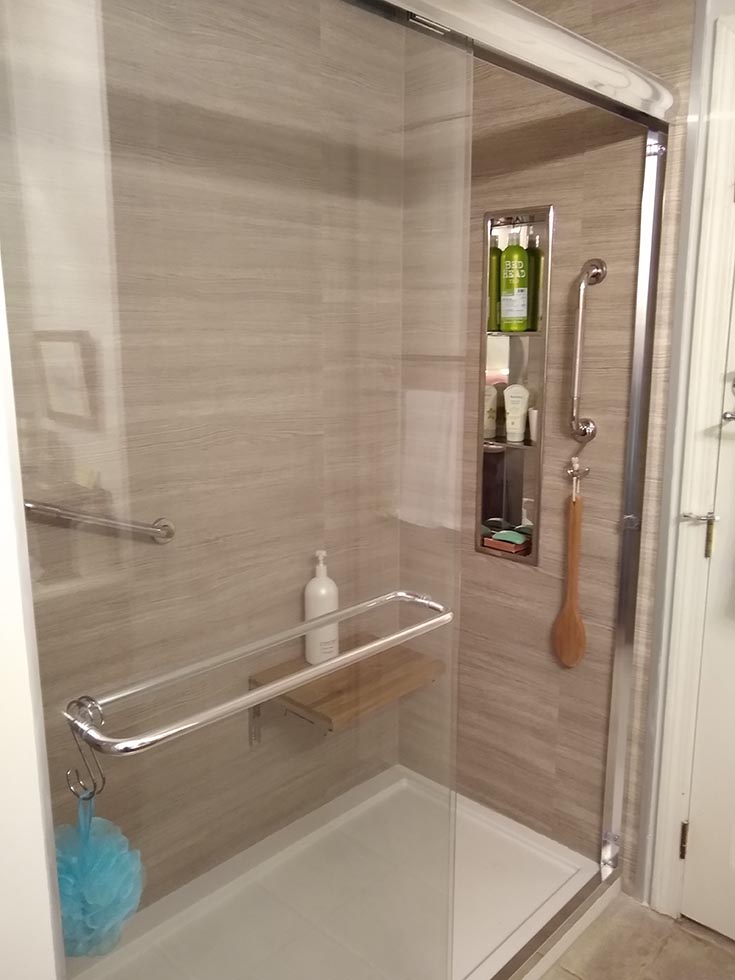
Cost saving tub to shower conversion idea #18 – Buy a thinner – or shorter – glass shower door (if, and only if, you don’t have to duck to get in).
If you still need to shave costs from your shower door selection another idea is to use a thinner (framed or semi-frameless) or shorter glass shower door.
Basically, the thicker and taller the glass, the more you’ll pay. However, if you’re tall ask how much clearance they’ll be under the door (especially if you’re looking at a barn-door style sliding door) so you know you won’t get wacked in the head when walking in.
Shower Accessory Details
Just like an outfit isn’t complete without a handbag, shoes, and jewelry- so a shower isn’t complete without the right accessories. Let’s look at how you can save money on shower accessories, yet still get a shower which functions well for you.
Cost saving tub to shower conversion idea #19 – Cover the shower window with the wall surround panels.
OK – while this is a way to save money (initially) on the job I think it’s a TERRIBLE idea. And although I’ve seen it done by other contractors –our bathroom remodeling division refuses to do this.
And here’s two reasons I advise covering over a window with wall panels:
- Reason #1 – It looks hideous from the outside. There’s no better way to make it difficult to sell your home than seeing through a window from the outside the back side of a shower panel system. Yuck! How tacky can you get?
- Reason #2 – It hurts the safety of your shower and how the bathroom feels. More falls occur in the bathroom than any other place in your home. And when your bathroom is darker – after you’ve covered over a window – it’s more dangerous.
Cost saving tub to shower conversion idea #20 – Use a mid-range shower head with a handheld shower
While many people take it for granted they’ll be able to shower standing up, this may not be the case for people with mobility challenges. Its for this reason it’s smart to choose a shower system which includes a handheld shower. It’ll allow your shower to keep working for you – even if your mobility isn’t what it used to be, and you need to shower while sitting on a shower bench seat.
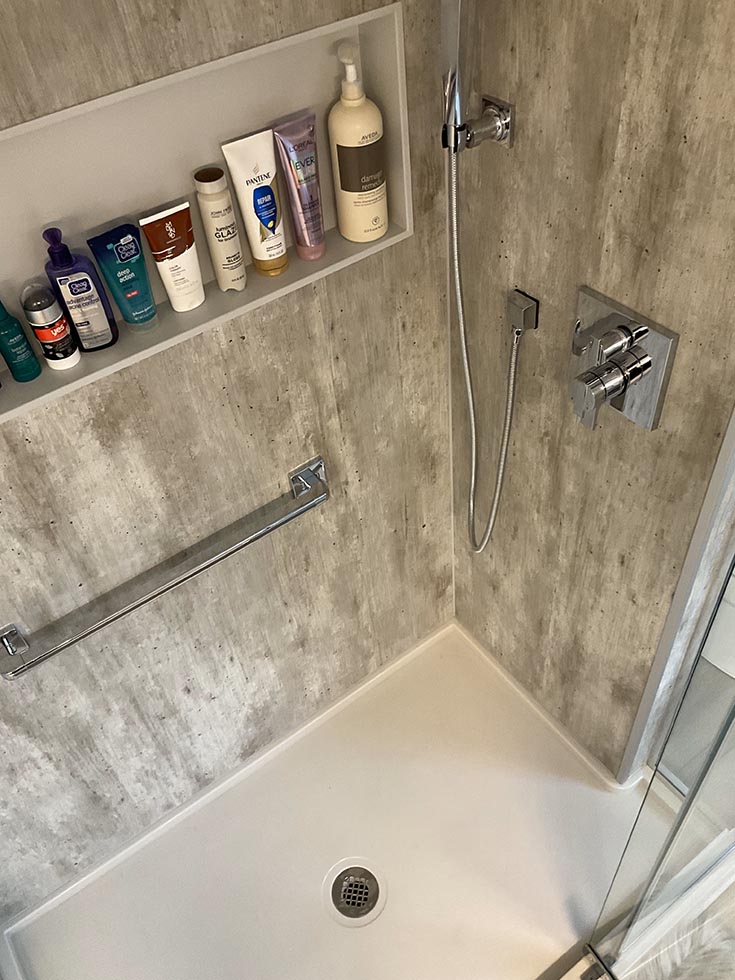
Cost saving tub to shower conversion idea #21 – Use corner shelves vs. recessed niches
I love long recessed niches in showers. They’re perfect for my wife who has lots of products. However, if you need to keep costs down, you’ll find better bargains with corner shelves than recessed niches. And, as a bonus, they’re simpler to install.
And to make sure the corner shelves are sturdy and safe; use solid surface shelves which are held to the wall with brackets.
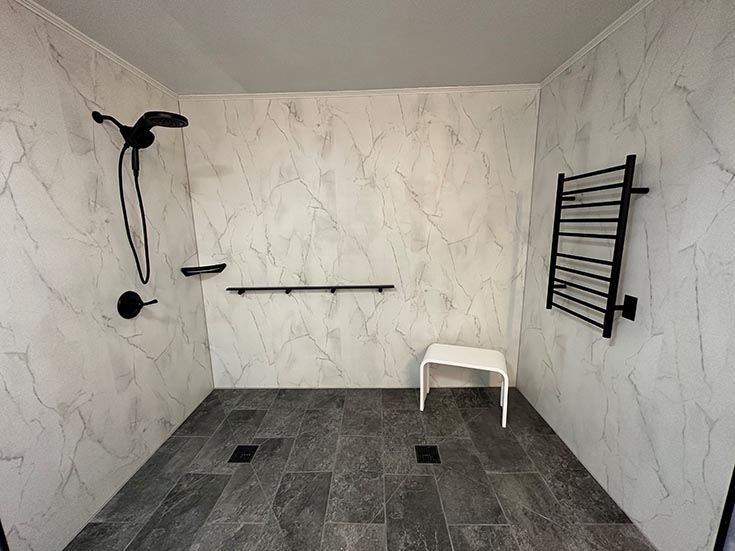
So, have you learned any new ideas to save on your tub to shower conversion? How can we help next?
So, which of these 21 ideas were helpful to you? I’d love to read your comments below.
And since I know this isn’t a project you do every day – you may want help. And there’s three ways me and my company can assist you:
- #1 – If you’re in the Northeast Ohio (Cleveland/Akron) area and looking for a Cleveland tub to shower conversion contractor call our Bath Doctor division (at 216-531-6085) for a Free Design Consultation.
- #2 – If you don’t live in Northeast Ohio (which is likely most of you) see how our alcove shower kits can help you get a good value for the materials for your tub to shower conversion. Call 877-668-5888 for nationwide wholesale pricing.
- #3 – If you’re looking for a contractor in your area, ask if one of our professional installing contractors through our dealer network can assist you.
Thanks for reading.
Mike
And BTW – if you’re an installing contractor and would like to learn about becoming a dealer of laminate wall panels, grout free modern low profile shower pans, and shower replacement kits for tub to shower conversions call Mike at 888-467-7488.
